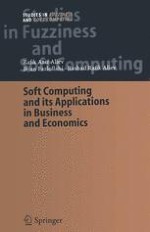"Soft Computing and its Applications in Business and Economics," or SC-BE for short, is a work whose importance is hard to exaggerate. Authored by leading contributors to soft computing and its applications, SC-BE is a sequel to an earlier book by Professors R. A. Aliev and R. R. Aliev, "Soft Computing and Its Applications," World Scientific, 200l. SC-BE is a self-contained exposition of the foundations of soft computing, and presents a vast compendium of its applications to business, finance, decision analysis and economics. One cannot but be greatly impressed by the wide variety of applications - applications ranging from use of fuzzy logic in transportation and health case systems, to use of a neuro-fuzzy approach to modeling of credit risk in trading, and application of soft computing to e-commerce. To view the contents of SC-BE in a clearer perspective, a bit of history is in order. In science, as in other realms of human activity, there is a tendency to be nationalistic - to commit oneself to a particular methodology and relegate to a position of inferiority or irrelevance all alternative methodologies. As we move further into the age of machine intelligence and automated reasoning, we run into more and more problems which do not lend themselves to solution through the use of our favorite methodology.
